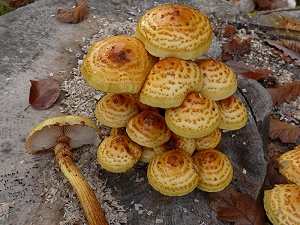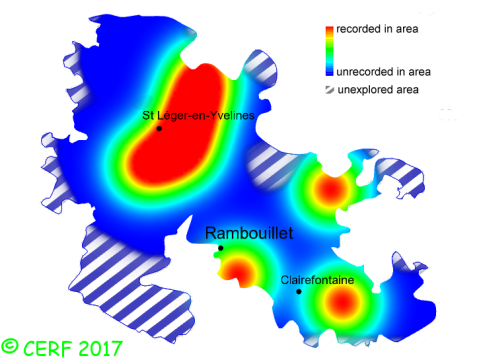| Pholiota aurivella (Batsch:Fr.) P. Kumm. |
|
|
|
|
|
|
The cap is orange yellow, with a central umbo; its margin is with white veil remnants. The cap surface is scaly, viscid or sticky. The stem is with brown scales at the base, dry or sticky (young), with a short-lived ring. The flesh is pale yellow, more like red-brown in the stem, unchanging; its taste is bitter or faint; the odour is not distinctive; its texture is fibrous. The gills are yellow then cinnamon, adnate, crowded . The spore print is rusty brown. This species is saprophytic, sometimes parasitic. It grows on wood, sometimes still alive, in tufts, in broad-leaved (sometimes coniferous) woods, mostly on beech, sometimes on willow. The fruiting period takes place from June to November.
Chemical tests : none. Distinctive features : bright yellow and viscous cap surface, with large blackening and adpressed scales which may disappear; tufted, often high in trees on wounds Pholiota aurivella is quite rare and localised in the forest of Rambouillet, and is occasional, more generally speaking . | ||
|
page updated on 14/01/18

